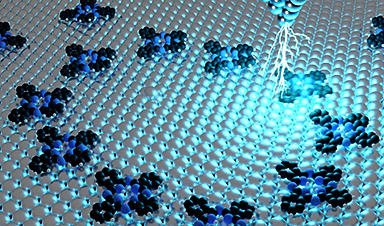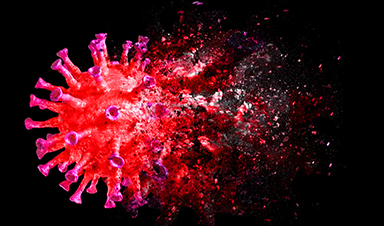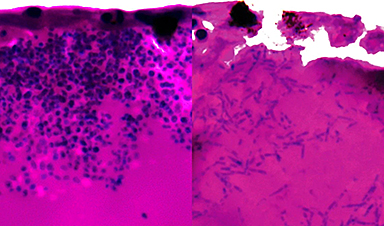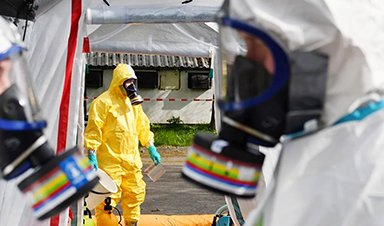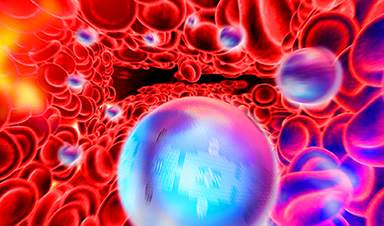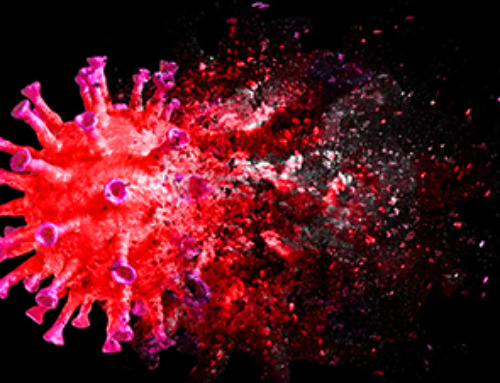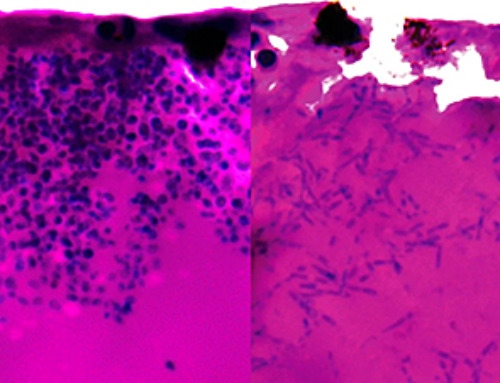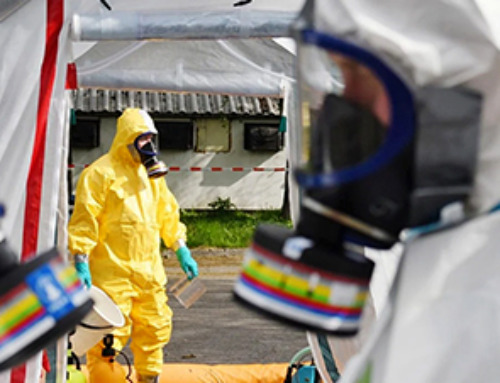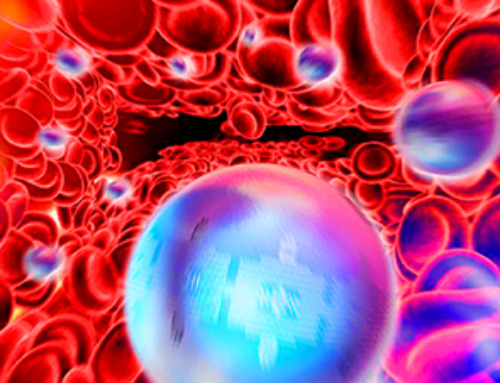At TU Graz, a pioneering research group is leveraging artificial intelligence to drastically enhance the way nanostructures are constructed.
They aim to develop a self-learning AI system that can autonomously position molecules with unprecedented precision, potentially revolutionizing the creation of complex molecular structures and quantum corrals for advanced electronics.
Revolutionizing Nanostructure Construction with AI
The properties of a material are often shaped less by its chemical composition and more by how its molecules are arranged within the atomic lattice or on its surface. Materials scientists harness this principle by positioning individual atoms and molecules on surfaces using high-performance microscopes. However, this process is highly time-consuming, and the resulting nanostructures remain relatively simple.
A research group at TU Graz aims to revolutionize this approach with artificial intelligence. "We want to develop a self-learning AI system that positions individual molecules quickly, specifically and in the right orientation, and all this completely autonomously," says Oliver Hofmann from the Institute of Solid State Physics, who heads the research group. This advancement could enable the construction of highly complex molecular structures, including nanoscale logic circuits.
The research group, called "Molecule Arrangement through Artificial Intelligence," has secured €1.19 million ($1.23 million) in funding from the Austrian Science Fund to turn this vision into reality
Advanced Techniques in Molecular Positioning
The positioning of individual molecules on a material's surface is carried out using a scanning tunneling microscope. The tip of the probe emits an electrical impulse to deposit a molecule it is carrying. "A person needs a few minutes to complete this step for a simple molecule," says Oliver Hofmann. "But in order to build complicated structures with potentially exciting effects, many thousands of complex molecules have to be positioned individually and the result then tested. This of course takes a relatively long time."
AI Integration for Enhanced Precision
However, a scanning tunneling microscope can also be controlled by a computer. Oliver Hofmann's team now wants to use various machine learning methods to get such a computer system to place the molecules in the correct position independently. First, AI methods are used to calculate an optimal plan that describes the most efficient and reliable approach to building the structure. Self-learning AI algorithms then control the probe tip to place the molecules precisely according to the plan.
"Positioning complex molecules at the highest precision is a difficult process, as their alignment is always subject to a certain degree of chance despite the best possible control," explains Hofmann. The researchers will integrate this conditional probability factor into the AI system so that it still acts reliably.
The Future of Quantum Corrals
Using an AI-controlled scanning tunneling microscope that can work around the clock, the researchers ultimately want to build so-called quantum corrals. These are nanostructures in the shape of a gate, which can be used to trap electrons from the material on which they are deposited. The wave-like properties of the electrons then lead to quantum-mechanical interferences that can be utilized for practical applications. Until now, quantum corrals have mainly been built from single atoms.
Oliver Hofmann's team now wants to produce them from complex-shaped molecules: "Our hypothesis is that this will allow us to build much more diverse quantum corrals and thus specifically expand their effects." The researchers want to use these more complex quantum corrals to build logic circuits in order to fundamentally study how they work at the molecular level. Theoretically, such quantum corrals could one day be used to build computer chips.
Collaborative Research and Expertise Synergy
For its five-year program, the research group is pooling expertise from the fields of artificial intelligence, mathematics, physics, and chemistry. Bettina Könighofer from the Institute of Information Security is responsible for the development of the machine learning model. Her team must ensure that the self-learning system does not inadvertently destroy the nanostructures it constructs.
Jussi Behrndt from the Institute of Applied Mathematics will determine the fundamental properties of the structures to be developed on a theoretical basis, while Markus Aichhorn from the Institute of Theoretical Physics will translate these predictions into practical applications. Leonhard Grill from the Institute of Chemistry at the University of Graz is primarily responsible for the real experiments on the scanning tunneling microscope.
Reference: "MAM-STM: A software for autonomous control of single moieties towards specific surface positions" by Bernhard Ramsauer, Johannes J. Cartus and Oliver T. Hofmann, 6 June 2024, Computer Physics Communications.
DOI: 10.1016/j.cpc.2024.109264
News
We May Never Know if AI Is Conscious, Says Cambridge Philosopher
As claims about conscious AI grow louder, a Cambridge philosopher argues that we lack the evidence to know whether machines can truly be conscious, let alone morally significant. A philosopher at the University of [...]
AI Helped Scientists Stop a Virus With One Tiny Change
Using AI, researchers identified one tiny molecular interaction that viruses need to infect cells. Disrupting it stopped the virus before infection could begin. Washington State University scientists have uncovered a method to interfere with a key [...]
Deadly Hospital Fungus May Finally Have a Weakness
A deadly, drug-resistant hospital fungus may finally have a weakness—and scientists think they’ve found it. Researchers have identified a genetic process that could open the door to new treatments for a dangerous fungal infection [...]
Fever-Proof Bird Flu Variant Could Fuel the Next Pandemic
Bird flu viruses present a significant risk to humans because they can continue replicating at temperatures higher than a typical fever. Fever is one of the body’s main tools for slowing or stopping viral [...]
What could the future of nanoscience look like?
Society has a lot to thank for nanoscience. From improved health monitoring to reducing the size of electronics, scientists’ ability to delve deeper and better understand chemistry at the nanoscale has opened up numerous [...]
Scientists Melt Cancer’s Hidden “Power Hubs” and Stop Tumor Growth
Researchers discovered that in a rare kidney cancer, RNA builds droplet-like hubs that act as growth control centers inside tumor cells. By engineering a molecular switch to dissolve these hubs, they were able to halt cancer [...]
Platelet-inspired nanoparticles could improve treatment of inflammatory diseases
Scientists have developed platelet-inspired nanoparticles that deliver anti-inflammatory drugs directly to brain-computer interface implants, doubling their effectiveness. Scientists have found a way to improve the performance of brain-computer interface (BCI) electrodes by delivering anti-inflammatory drugs directly [...]
After 150 years, a new chapter in cancer therapy is finally beginning
For decades, researchers have been looking for ways to destroy cancer cells in a targeted manner without further weakening the body. But for many patients whose immune system is severely impaired by chemotherapy or radiation, [...]
Older chemical libraries show promise for fighting resistant strains of COVID-19 virus
SARS‑CoV‑2, the virus that causes COVID-19, continues to mutate, with some newer strains becoming less responsive to current antiviral treatments like Paxlovid. Now, University of California San Diego scientists and an international team of [...]
Lower doses of immunotherapy for skin cancer give better results, study suggests
According to a new study, lower doses of approved immunotherapy for malignant melanoma can give better results against tumors, while reducing side effects. This is reported by researchers at Karolinska Institutet in the Journal of the National [...]
Researchers highlight five pathways through which microplastics can harm the brain
Microplastics could be fueling neurodegenerative diseases like Alzheimer's and Parkinson's, with a new study highlighting five ways microplastics can trigger inflammation and damage in the brain. More than 57 million people live with dementia, [...]
Tiny Metal Nanodots Obliterate Cancer Cells While Largely Sparing Healthy Tissue
Scientists have developed tiny metal-oxide particles that push cancer cells past their stress limits while sparing healthy tissue. An international team led by RMIT University has developed tiny particles called nanodots, crafted from a metallic compound, [...]
Gold Nanoclusters Could Supercharge Quantum Computers
Researchers found that gold “super atoms” can behave like the atoms in top-tier quantum systems—only far easier to scale. These tiny clusters can be customized at the molecular level, offering a powerful, tunable foundation [...]
A single shot of HPV vaccine may be enough to fight cervical cancer, study finds
WASHINGTON -- A single HPV vaccination appears just as effective as two doses at preventing the viral infection that causes cervical cancer, researchers reported Wednesday. HPV, or human papillomavirus, is very common and spread [...]
New technique overcomes technological barrier in 3D brain imaging
Scientists at the Swiss Light Source SLS have succeeded in mapping a piece of brain tissue in 3D at unprecedented resolution using X-rays, non-destructively. The breakthrough overcomes a long-standing technological barrier that had limited [...]
Scientists Uncover Hidden Blood Pattern in Long COVID
Researchers found persistent microclot and NET structures in Long COVID blood that may explain long-lasting symptoms. Researchers examining Long COVID have identified a structural connection between circulating microclots and neutrophil extracellular traps (NETs). The [...]
